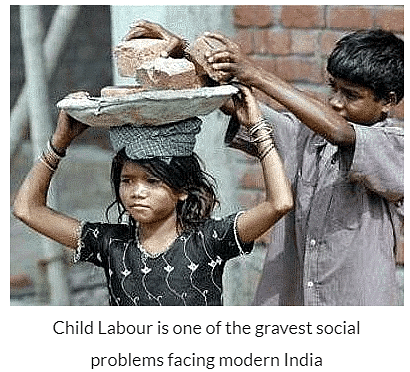Child Labour | Sociology Optional for UPSC (Notes) PDF Download
Child Labour in the Informal Sector
Child labour is a widespread and pressing issue within the informal sector, particularly in India. Poverty, illiteracy, and social backwardness often lead to children being forced to work in hazardous conditions, at the cost of their education and future prospects. According to the International Labour Organisation, around 73 million children
Child Labour in India: A Grave Social Problem
Child labour in India is a complex issue, deeply rooted in poverty, illiteracy, and social backwardness. Millions of children are forced to work in hazardous conditions instead of attending school, which hinders their long-term prospects and perpetuates the cycle of poverty. Despite the existence of laws prohibiting child labour, the practice remains widespread.
Child Labour in Rural and Urban Areas
In India, around 87% of child labourers are found in rural areas, working in farms, plantations, fisheries, and cottage industries. The remaining 13% are found in urban areas, employed in various informal sector jobs. These children are often forced to work long hours in unhealthy conditions, which can lead to various health problems and even premature death.
Government Efforts to Combat Child Labour
The Indian government has taken several steps to address the issue of child labour, including the implementation of Article 24 of the Indian Constitution, which prohibits the employment of children below the age of 14 in hazardous workplaces. Additionally, the National Child Labour Project (NCLP) has established special schools to provide education, vocational training, and nutrition to children withdrawn from employment. However, these efforts have had limited success in tackling the problem, as the number of working children covered under different programs is relatively small compared to the total child workforce.
Strategies for Addressing Child Labour
To effectively address the issue of child labour in India, a multifaceted approach is required. This includes promoting universal elementary education, raising awareness about the importance of the two-child family norm, and providing vocational and technical education to children from an early age. This would enable children from poor families to simultaneously 'earn and learn', reducing their dependence on exploitative forms of employment. Additionally, encouraging children to take up family vocations after a certain level of education, provided it is not hazardous to their health, can also help in tackling the problem of child labour.
We also hope that, through education, these individuals will become more aware of their difficult circumstances, which will gradually enable them to explore alternative means of earning a living. This will prevent them from being taken advantage of and exploited for financial gain.
Conclusion
The informal sector of an economy, particularly in developing countries like India, is characterized by low wages, lack of job security, and poor working conditions, which often leads to the prevalence of child labor. To effectively combat this issue, a multifaceted approach is required, including promoting universal education, raising awareness, and providing vocational training. By empowering children with education and skills, they can break the cycle of poverty and exploitation, and contribute to a more equitable and sustainable economic growth.Frequently Asked Questions (FAQs) of Informal Sector & Child Labour
What is the informal sector, and how does it differ from the formal sector?
The informal sector is a part of the economy that operates outside the formal, government-regulated sector. It typically includes self-employed individuals, small unregistered businesses, and workers not subject to labor laws or social protections. In contrast, the formal sector comprises larger enterprises that offer better wages, higher skill levels, modern technology, unionization, and social security protections.
Why is child labor a significant issue in the informal sector?
Child labor is a pressing issue in the informal sector, particularly in developing countries like India, due to poverty, illiteracy, and social backwardness. Children are often forced to work in hazardous conditions instead of attending school, which hinders their long-term prospects and perpetuates the cycle of poverty.
What are the main industries in which child labor is prevalent in India?
In India, child labor is most prevalent in rural areas, where children work in farms, plantations, fisheries, and cottage industries. In urban areas, child laborers are employed in various informal sector jobs, often working long hours in unhealthy conditions.
What has the Indian government done to address the issue of child labor?
The Indian government has implemented Article 24 of the Indian Constitution, which prohibits the employment of children below the age of 14 in hazardous workplaces. Additionally, the National Child Labour Project (NCLP) has established special schools to provide education, vocational training, and nutrition to children withdrawn from employment. However, these efforts have had limited success due to the vast number of working children compared to those covered under different programs.
What strategies can be employed to effectively address child labor in India?
A multifaceted approach is needed to address child labor in India, including promoting universal elementary education, raising awareness about the importance of the two-child family norm, and providing vocational and technical education to children from an early age. Encouraging children to take up family vocations after a certain level of education, provided it is not hazardous to their health, can also help tackle the problem of child labor.
|
139 videos|428 docs
|
FAQs on Child Labour - Sociology Optional for UPSC (Notes)
| 1. What is child labour in the informal sector? |  |
| 2. What are the causes of child labour in the informal sector? |  |
| 3. How does child labour in the informal sector impact children's development? |  |
| 4. What measures can be taken to combat child labour in the informal sector? |  |
| 5. What role do governments play in addressing child labour in the informal sector? |  |
















